























How civility changes, remains the same, in politics
By WILL SHEELINE






































In the coming months, Oyster Bay residents and visitors to the hamlet looking out over the harbor can expect to see floating barges of plants as part of a new project by the town to mitigate stormwater runoff and work in tandem with the town’s ongoing oyster rehabilitation projects.
The Town of Oyster Bay was recently awarded a $435,000 grant from the New York State Environmental Facilities Corporation to spearhead a transformative project aimed at enhancing water quality, implementing green infrastructure, and mitigating storm-
water runoff in Oyster Bay Harbor.
Town Supervisor Joseph Saladino said the grant was just the most recent part of Oyster Bay’s ongoing efforts to protect the local environment.
“We applied for this knowing that restoring the pristine waters of Oyster Bay Harbor is extremely important, and it’s one of the many steps that we have taken and will be taking going forward to make sure that we get our harbor to the best it’s ever been,” Saladino said. “This project is specifically about ensuring that runoff that contains some contaminants from the roadway is filtered before it reaches Oyster Bay Harbor.”





















This is the second in a series delving into the complexities of elections to provide a better understanding of one of Americans’ most precious privileges, the right to vote.
While most people are taught in schools across the country that American politics have always been conducted with respect and dignity, in the annals of American political history, the campaign trail has often been fraught with mudslinging, deception, and outright falsehoods.
Pilip repudiating claims that she was anti-abortion and antienvironment.
Chuck Lavine, a New York state assemblyman, noted that these sorts of political attacks were nothing new to American politics, and added that they dated back to the earliest days of American democracy. A particularly provocative example occurred during the election of 1800 between Thomas Jefferson and John Adams, when a newspaper editor and political ally of Adams accused the thenPresident of being a hermaphrodite.

From the early days of the republic to the digital age of today, candidates have engaged in tactics aimed at discrediting their opponents and swaying public opinion, often at the expense of truth and integrity.
As the recent special election for New York’s 3rd Congressional District between Democrat Tom Suozzi and Republican Mazi Melesa Pilip showed, the electoral tradition of name-calling and truth-twisting are alive and well. Both candidates took umbrage with ads ran by their opponent or their opponent’s supporters, with Suozzi bristling at the nickname “the Godfather of the border crisis” and
“There have always been instances of dirty campaigns,”
Lavine said. “I thought it was a good sign that many people in that Suozzi-Pilip race utterly disregarded inflammatory commercials that were on television, on radio and on the internet.”
Not everyone agrees with Lavine, however. Joseph Saladino, supervisor for the Town of Oyster Bay, claimed that civility had always been a key aspect in elections, and pointed to his election wins as a key example.
“Civility is important in politics as residents want representatives that will enact positive solutions to enhance our community,” Saladino wrote in
CONTINUED FROM PAGE 1
improvements at Beekman Beach and the Mill River Outfall, addressing longstanding water quality issues plaguing the harbor. A key focus of the initiative is the installation of nine floating wetlands, spanning the Mill River Outfall, along with 1,200 linear feet of wetland restoration and the establishment of oyster reefs.
These measures are designed to mitigate stormwater runoff originating from a sprawling, multijurisdictional watershed spanning approximately 1850 acres.
W“When you improve a natural resource, you protect its sustainability,” Saladino said. “The harbor is very important to our natural resources, it’s very important to the sustainability of the marine environment, but it’s also very important to our local economy, and we want to continue to make sure that all of them thrive.”
tive components showcase the potential of ecological systems to address water quality issues sustainably and practicality.
hen you improve a natural resource, you protect its sustainability.
In addition to improvements at the Mill River Outfall, the project will advance community-oriented plans for green infrastructure enhancements at the two-acre beach parking lot. These enhancements, including porous pavers (a form of pavement which catches rainwater runoff), street trees, and bioswales (small strips of grass which catch and filtrate water before it can reach the shore), aimed to further mitigate pollution, increase groundwater recharge, and provide environmental education opportunities.
JOSEPH SALADINO Supervisor, Town of Oyster Bay
“We’re making sure that this project serves many purposes,” Saladino said. “We’re doing well by the public, we’re protecting the environment, but we’re also keeping in mind the taxpayers’ needs.”

Will Sheeline/Herald The grant, awarded by the New York State Environmental Facilities Corporation, will support the town’s planned green infrastructure project at Beekman Beach.
asm for the project’s potential impact, adding that the environmental organization would be supporting the town in this project and spreading awareness about its importance.
The floating wetlands and oyster reefs will serve as natural filtration systems, effectively reducing excess nutrients, pollutants, and bacteria from stormwater runoff before it disperses throughout Oyster Bay Harbor, particularly nitrogen. Moreover, these innova-
The project’s significance extends beyond environmental considerations, with Saladino highlighting its potential to foster educational opportunities and community engagement.
Christine Suter, executive director of Friends of the Bay, expressed enthusi-

“What we’re going to be doing is providing support and possibly developing educational or outreach opportunities for students and community members to participate in learning about the project,” Suter said. “It’s exciting because this is going to be the first floating wetland project in Nassau County, and hopefully this can serve as an example for what can be done in neighboring bays such as Hempstead Harbor.”


Oyster Bay Harbor, renowned for its diverse marine life and ecological significance, has long grappled with the repercussions of stormwater runoff, resulting in the closure of shellfish harvesting and swimming areas. However, with the implementation of the comprehensive green infrastructure improvements outlined in the project, there is renewed hope for the harbor’s ecological restoration and long-term sustainability. For more information on the project and ongoing environmental initiatives in Oyster Bay, visit OysterBayTown.com or FriendsOfTheBay.org.



























Oyster Bay Town Hall saw dozens come to honor Black History Month on Feb. 22 as the town government hosted its celebration of the lives and histories of the extraordinary African-Americans in Oyster Bay and Nassau County. Attendees got the chance to learn about Black history, look at relics from a private collection, and celebrate the announcement of a new memorial plaque in honor of David Carll, a Civil War veteran who was a leader in Oyster Bay’s Black community in the late 1800’s.
Town Supervisor Joe Saladino welcomed attendees, consisting of local politicians, educators, community leaders, and residents of all backgrounds. Saladino added that supporting and remembering Black history was an integral part of celebrating broader American history, describing it as part of the “mosaic” of the past.
Ewill serve to call attention to Carll Hill Road, located off of Pine Hollow Road, and is the street where Carll settled with his family after the war, and where his house still stands and his descendants still live.
Among the speakers at the event was one of those descendants, who gave the gathered crowd a brief history of her famous relative. Denice Evans-Sheppard, the director of the Oyster Bay Historical Society and Carll’s great-greatgranddaughter, explained the struggles and successes Carll and his family faced in the 1800’s.
vents like this celebration help connect us all with a greater understanding and appreciation for all of the cultures that we have to offer.
JOSEPH SALADINO Supervisor, Town of Oyster Bay“This town has the most diversity of any community in Nassau County,” Saladino said. “Events like this celebration help connect us all with a greater understanding and appreciation for all of the cultures that we have to offer.”
Sitting proudly on the dais in town hall was the new plaque which will honor Carll, a freeman originally from Cold Spring Harbor who at 18 joined the 26th regiment of the U.S. Colored Troops and went on to become a prominent landowner in the area. The plaque
A particularly trying challenges that Evans-Sheppard discussed was the discrimination the family faced because Carll’s wife, Mary Louise Appleford, was white. Ultimately the couple had to be buried in separate graves due to laws at the time, and are still apart from each other despite the efforts of their descendants.
Despite this, Evans-Sheppard did highlight the successes of Carll and his several of his sons, including Joseph, his youngest son, who worked as a printer and editor for the Oyster Bay Pilot, where he would frequently interview President Theodore Roosevelt at “the summer White House” at Sagamore Hill. Another son, Francis, ran a profitable garbage collection business in the years before the town had its own system.
While the Black population of Oyster Bay has shrunk from 17 percent to roughly 0.3 percent according to Evans-

Sheppard, the important history and legacy of Carll and people like him.
“As the years went on, many other peoples came into the community like
the Italians and the Polish, and they all worked together,” Evans-Sheppard said. “They needed a community. They needed to work together.”
Sea Cliff residents and visitors are gearing up for a night of community camaraderie and environmental support as the Coalition to Save Hempstead Harbor prepares for its annual Crawl for a Cause event on March 8. This beloved tradition, now in its 16th year, promises a return to normalcy after last year’s cancellation due to the pandemic.
The crawl gets people out and it gets them back into the local restaurants and bars.
Originally initiated by the Sea Cliff Beach Committee in 2008, the crawl has become a staple event for locals, attracting participants eager to explore the village’s vibrant bar scene while contributing to a worthy cause. In 2018, the Coalition to Save Hempstead Harbor took the reins, continuing the legacy of community engagement and environmental advocacy.
Elaine Neice, events coordinator for the coalition and one of the event’s main organizers, expressed enthusiasm for this year’s crawl, highlighting its significance in bringing people together after the depths of winter.
“The crawl gets people out and it gets them back into the local restaurants and bars,” Neice said. “It creates some really good energy in the village, and for the residents and for people that come from out of town, it’s a really good vibe.”
Participants can expect an evening filled with fun and philanthropy as they traverse Sea Cliff, Central, and Roslyn avenues, visiting five participating bars and restaurants. New to this year’s lineup is the recently opened coffeeshop Daily Grind, offering necklace pretzels alongside pizzeria Il Villagio, while thirsty pub crawlers can visit participating bars; Gallagher’s, Onion Tree, Foster’s, Still Partners and Campground Five.
Tickets, priced at $45 for six, grant crawlers access to one free drink or side dish at each establishment. This year’s event will also feature a raffle, with prizes including family fun day packages donated by Shore Thing Rentals, further adding to the excitement and fundraising efforts.
While the crawl provides an opportunity for revelry, its impact extends beyond the village’s nightlife. Proceeds from the event support the coalition’s ongoing initiatives, including water quality testing, habitat improvement projects, and community outreach programs like the Junior Ambassador Program.
Neice emphasized the significance of local businesses in making the crawl a success year after year,
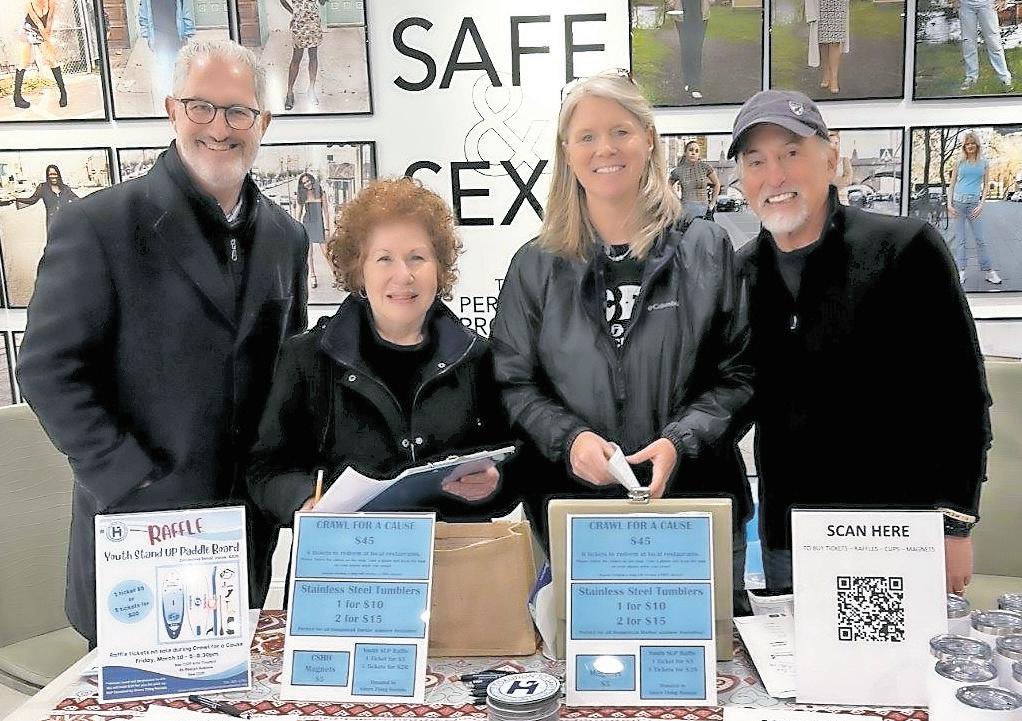
When: Friday, March 8, 7 to 11 p.m.
Where to buy tickets: Douglas Elliman Real Estate, 263 Sea Cliff Avenue, Sea Cliff, from 5 to 8:30 p.m. on March 8
Price: $45 — Will Sheeline
acknowledging their vital role in fostering a sense of community and supporting environmental conservation efforts.
“We really do appreciate their participation and excitement,” she noted. “They’re so happy to participate, and that’s what makes it work. If they didn’t participate, we wouldn’t be able to have a pub crawl.”
For more information on how to participate in the Crawl for a Cause and on the work that the coalition does, visit CoalitionToSaveHempsteadHarbor.org.

■
■
Courtesy Coalition to Save Hempstead Harbor Crawlers had a blast last year, including Dan Roth, left, co-owner of Still Partners, a participating venue, and Nick Pinto, deputy mayor and village board member. ELAINE NEICE Events coordinator, Coalition to Save Hempstead Harbor Courtesy Coalition to Save Hempstead HarborThe history of Quakerism has deep roots in the story of the United States, whether it be their influence on the colonial period or the key role Quakers played in the Revolutionary War, although their legacy is often overlooked by non-academics.
William Green, a senior at Friends Academy, a Quaker-run school in Locust Valley, has set out to educate history-lovers on the North Shore by giving a lecture at the North Shore Historical Museum in Glen Cove on another forgotten aspect of Quaker history: the religion’s role in the abolition of slavery.
Amy Driscoll, the director of the museum, explained that when Green reached out to her about doing the presentation she was impressed by the depth of his research and his composure. She added that the presentation, which was held on Feb. 4, was the perfect way for the museum to kick off Black History Month.
“We try to be as welcoming as we can to young scholars and new authors and burgeoning artists,” Driscoll continued. “We try to host as many people and lectures as we can, especially for those who might not normally get a public forum for their work.”
Quakers, or more properly, the Religious Society of Friends, are members of a sect of Protestantism that broke off

In
of their beloved dog, cat, bird
pet. Here is an abridged version of New York’s statute authorizing a trust for your pet:
a. The intended use of the principal or income, of a trust for the care of a designated domestic or pet animal, may be enforced by an individual designated for that purpose in the trust instrument. Such trust shall terminate when no living animal is covered by the trust.
b. No portion of the principal or income may be converted to the use of the trustee or to any use other than for the benefit of a covered animal.
c. Upon termination, the trustee shall transfer the unexpended trust property as directed in the trust instrument or, if there are no such directions in the trust
from the Church of England in the mid17th century, and quickly settled throughout the early British colonies. While the majority went to Pennsylvania, founded by Quaker and landowner William Penn, Green explained that numerous Quaker communities were set up on Long Island, and George Fox, the movement’s founder, even visited and preached in Oyster Bay.
However, Green pointed out, shortly after their new sect was created Quakers were already entangled with the economic tentacles of slavery, particularly in Barbados, the first Quaker community in the New World. Green explained that many early prominent Quakers, including Fox and Penn, had close ties with the slave trade and slavers on the island.
“It’s important to note that while Quakers were later at the forefront of abolitionism, slavery was still a norm in the Quaker religion, and this is particularly reflected in Barbados,” Green said. “During the 1600’s, Quakers were frequently slaveowners, and often traded slaves to the Quakers in Pennsylvania.”
Green emphasized the fact that despite their early involvement in slavery and the slave trade, numerous Quakers began speaking out against the practice of slavery quite early on. He added that in 1688 Francis Daniel Pastorius, a young German attorney and Quaker from Germantown, Pennsylvania (now part of Philadelphia) wrote the “Germantown Quaker Petition Against Slavery,” intended to

instrument, the property shall pass to the estate of the grantor.
d. A court may reduce the amount of property transferred if it determines that amount substantially exceeds the amount required for the intended use. The amount of the reduction, if any, passes as unexpended trust property pursuant to paragraph (c), above.
e. If no trustee is designated or no designated trustee is willing or able to serve, a court shall appoint a trustee and may make such other orders and determinations as are advisable to carry out the intent of the grantor and the purpose of this section.
If you are interested in setting up a trust for your beloved pet, please make an appointment to see us for a free consultation. Should you have no one to take care of your pet, try PetEstates.com, who will perform this service for you.

While the local Quaker hierarchy rejected the petition, Green noted that this petition marked the first instance of Quakers speaking out against slavery. While many Quakers would continue to own and profit from enslaved people for decades, the petition marked the beginning of the abolition movement in the Society of Friends, and one of the earliest examples of abolitionist writing in history.
Green then spoke of several prominent Quakers in the early and mid-1700’s who had spoken out against slavery, most notably Benjamin Lay, who in 1738 stabbed a hollowed-out book filled with fake blood during the Quakers’ yearly meeting in Philadelphia, spraying the crowd and crying, “Thus shall God shed the blood of those persons who enslave their fellow creatures.”
raise the issue of the contradiction between slavery and the biblical golden rule: “Do unto others as you would have them do unto you.”
“(Pastorius) used this idea to expose slavery and how God does not approve of this institution,” Green said. “He also prophesied a dark future for Quakers if they did not start to free their enslaved people.”
Green concluded by discussing slavery on Long Island, and how despite modern tendencies to blame the South for the atrocity of bondage, it was incredibly prevalent here as well. Long Island actually had the most slaves of any northern colony, and it would not be ended until 1827.
Despite these facts, Green added that even on Long Island many Quakers were prominent abolitionists. While slavery is an indelible stain on American history, Green emphasized that the Quakers consistently and actively tried to right the wrong.





Nassau County Executive Bruce Blakeman says he’s protecting athletes in his executive order last week banning some transgender participants in female-centric sports in county facilities. But the action also has raised concerns — and legal questions. Some of which were brought before the Nassau County Legislature on Monday.
We’re confident that as soon as this executive order comes before court, it will be shut down
BoBBy HodGSon director New York Civil Liberties Union“An individual’s gender is defined as the individual’s biological sex at birth,” Blakeman wrote in his executive order, which demands any sport entities interested in using county facilities to first designate themselves based on male, female or co-ed categories, and then only accept athletes who meet that criteria according to the gender that was originally listed on their birth certificate.
There are nearly 100 facilities in the county that will be impacted, Blakeman told reporters last week.
But Bobby Hodgson — director of LGBTQ rights litigation at New York Civil Liberties Union — says those impacts may not be felt long.
“Were confident that as soon as this executive order comes before court, it will be shut down,” Hodgson said.
The executive order primarily targets athletes born biologically male, but who now identify as female, from participating in teams intended only for girls or women. Blakeman’s order does not require facilities to ban athletes born female and now identifying as male from joining male-centric teams.
Blakeman, however, was quick to add last week, that trans athletes identifying as females aren’t completely banned — they will still be able to participate in co-ed leagues as well as male competitive leagues.
Nassau County Legislator Samantha Goetz backed Blakeman’s directive, citing safety and integrity.
“This is about protecting our female athletes,” said Goetz, whose district primarily represents Oyster Bay. “This is about making sure they’re not denied opportunities for scholarships, or any type of opportunity that comes with playing sports, recognition and things like that.”
Eva Nordman, an 8-year-old who plays basketball, softball and soccer, said it was also about keeping sports equitable.
“Boys have different chromosomes than girls and that makes them stronger,” Nordman said. “It’s not fair if they


college, whether it’s high school, whether it’s just a community league — and it is an unfair advantage for someone who’s a biological male to compete against a biological female.”
Dawn Foster — a former deputy county attorney and an Oceanside resident — stopped by Mineola on Monday to speak out against Blakeman’s executive order in front of the county legislature on behalf of her family.
“In 2021, when I finally stopped fighting against myself and accepted that I was a woman and needed transition, we felt fortunate to live in Nassau County,” Foster said, calling the executive order unlawful, and condemning what she described as efforts to demonize trans women. “That feeling was shattered last week.
“Blakeman and Goetz press conference was a total of repudiation of the humanity of trans people, implying that we are cheaters, liars and bullies.”
compete against us.”
Protesters gathered outside of Blakeman’s news conference last week led by Juli Grey-Owens, executive director of Gender Equality New York, chanting, “Trans kids are our kids.” They will get some support from the NYCLU — a notfor=profit legal right group — say they will consider taking Nassau County to court over what Hodgson described as a disregard of state human rights and civil rights laws.
An amendment to the state’s human rights law in 2019 outlawed gender identity and expression discrimination in employment, housing, places of public accommodation, and non-religious schools, according to state officials.
Hodgson is not alone. State attorney general Letitia James condemned Blakeman’s order, calling it “transphobic and
deeply dangerous.”
“In New York, we have laws that protect our beautifully diverse communities from hate and discrimination of any and every kind,” James said, in a statement. “My office is charged with enforcing and upholding those laws, and we stand up to those who violate them and trespass on the rights of marginalized communities. We are reviewing our legal options.”
But Blakeman told reporters last week he knew of no state policy that could threaten his executive order
“This is not precluding anybody from participating in sports,” Blakeman wrote in his executive order. “What it is, is identifying that there are women and girls who spent a tremendous amount of time and effort to excel and compete in their sports that are women’s sports whether it’s the WNBA, whether it’s
Foster already had support from some county legislators like Carrié Solages and Delia DeRiggi-Whitton.
“I have never, in my many years of government service, had a constituent or parent complain to me about this issue,” Solages said, “making it clear that this embarrassing and illegal order is just another attempt by County Executive Blakeman to distract from the many issues that plague Nassau County.”
But Blakeman is not going to let those efforts dissuade him.
“We are finding out, in the last few months, there was a movement for biological males to bully their way into competing in sports or leagues or teams that identify themselves — or advertise themselves — as girls, or female or women’s teams or leagues,” the county executive said last week. “We find that unacceptable. It’s a form of bullying.”

“The Vacant Space Revival Program qualified us for on-bill credits that really help me manage costs.”
—George Karatzas, James Cress Florist, Smithtown
Unoccupied business spaces are an opportunity to help bring vitality to downtown areas. For George Karatzas, owner of James Cress Florist, staying downtown was a priority, but costs were prohibitive. Then George applied for our Vacant Space Revival Program, which has provided $2,462 in bill credits to help offset his overhead.* And Smithtown continues to have a business that brings warmth and charm to the area. It’s a beautiful thing to see come together—just like George’s floral arrangements.
psegliny.com/EcoDev
*Incentives, grants, and savings will vary with every project.
CONTINUED FROM PAGE 1
a statement. “In the Town of Oyster Bay we’ve demonstrated that running a civil campaign is possible by speaking about our long record of achievements in turning this town around. That illustrates a sharp and successful contrast, and thus a successful campaign outcome.”
Political ads have often been an opportunity for candidates and their supporters to attack their opponent indirectly, fostering doubt about anything a candidate may stand for or be. In the Suozzi-Pilip race, both sides accused the other of being on the extreme side of the political spectrum, to the left for Suozzi and the right for Pilip, despite both having largely similar views on several issues including Israel, the SALT tax reduction, and crime.
An ad against Suozzi by Congressional Leadership Fund Super PAC accused the Glen Cove native of being responsible for the border crisis, despite the fact that the border crisis has been an ongoing issue since before Suozzi even entered political life. Meanwhile, the Jewish Democratic Council of America ran an ad claiming Pilip believes overturning Roe vs. Wade was the right decision, despite the fact that she never said that.
This tradition of using ads to misrepresent a candidate’s political stances is not a new one. During the 1860 presidential campaign, racist opponents of Abraham Lincoln published numerous drawings which depicted white Americans treating Black people equally, even though Lincoln, at that point, had never publicly supported the anti-slavery movement.
The election dynamics of the Suozzi-Pilip race mirrored these historical trends, with both candidates subjected to misleading attacks and smear campaigns. Lavine recalled witnessing commercials labeling Suozzi as an “ultra-leftist radical,” a portrayal he deemed patently false.
That does not mean that modern political campaigns stoop to every low, however. A more traditional style of ad that did not come up during the Suozzi-Pilip race was the use of political cartoons or caricatures to emphasize or lampoon negative aspects of their opponents. In the 1830’s, numerous cartoons of Andrew Jackson dressed as a king highlighted his authoritarian nature and claimed he did not respect democracy or its institutions.
Furthermore, while modern campaign ads can often seem aggressive and even at times offensive and vulgar, compared to some historical political attacks, these appear relatively tame. In the 1836 presidential election, folk hero Davy Crockett accused Martin Van Buren of crossdressing, and in the 1977 New York mayoral election placards were placed reading “vote for Cuomo, not the homo” in reference to Ed Koch, according to nonpartisan public policy organization the Brookings Institution.
Despite this, the modern era has its own unique set of problematic systems which further enable campaigns to put out numerous misleading messages and ads. Lavine highlighted the impact of the Citizens United case, which unleashed unprecedented amounts of money into political campaigns, funding advertisements that can truly mislead voters.
“While some of that money contributes to advertising that’s honest and constructive, too much of it underwrites advertisements that are base and demeaning and untrue,” Lavine said. “I think we just have to strengthen ourselves to the realization that we are going to be subject to a tremendous and disgusting level of commercialization in the political process.”
Moreover, the proliferation of social media has exacerbated the spread of misinformation. The distinction between negative campaigning and dirty tricks becomes blurred in the digital age, where fabricated stories can permeate public discourse with alarming speed and intensity.
Despite these modern problems, Andy Person, chief


Before the advent of social media, election pins and paraphernalia such as this anti-Barry Goldwater one were used to poke fun at the campaign’s opponent.
of strategy and advancement at Long Island University where he runs the Museum of Democracy, argues that the goal remains the same and in reach; protecting democracy. Person acknowledged that while the digital age poses unique challenges, Americans throughout the centuries have dealt with issues that, while less technologically advanced, were equally as divisive for voters.
“The only people who could vote when our country was founded were white, male land-owners. That doesn’t seem to be much of a democracy compared to today’s standards, but that’s what we had to start with,” Person said. “Did we have it right back then? No. Were we slow? Very slow. But are we done yet? Not at all.”
As America grapples with the enduring legacy of divisive and deceptive political campaigns, calls for

Numerous
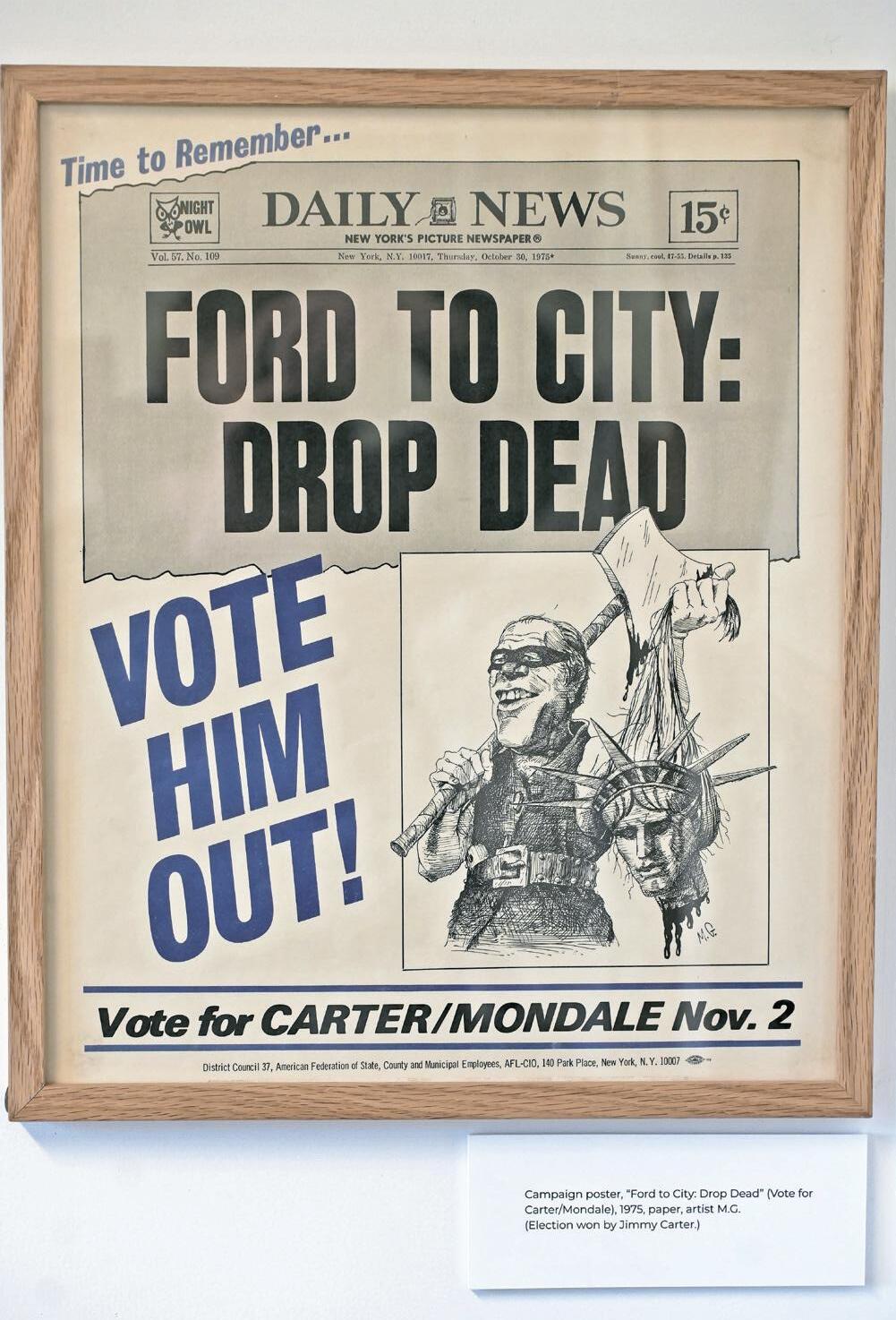
Political cartoons like this one helped ensure Gerald Ford only served one term in office as president.
civic education and media literacy have grown louder. Lavine emphasized the importance of teaching civics and media literacy in schools, to equip future generations with the critical thinking skills necessary to discern truth from falsehood in an age of rampant disinformation.

Every year a grand marshal is chosen for the St. Patrick’s Day Parade in Glen Cove. This year, Christine Rice, director of the Glen Cove Senior Center, was chosen.
“Christine is very active in our community between the senior center and Nosh; she loves helping others in need,” Lisa Forgione, the Glen Cove parade committee chairwoman, said. “As a member of the Glen Cove Senior Center, I see first-hand how every member loves Christine. She is sweet, caring, and cares for our community.”
Rice’s roots in the Irish community run deep, as she hails from a family with a rich Irish heritage. Her grandfather, who immigrated to the United States from Ireland at the age of 13, played a pivotal role in shaping her family’s legacy. Establishing a successful construction company and later overseeing construction projects for the Archdiocese of New York, he epitomized the resilience and determination of the Irish immigrant experience.
“I’m honored that they had asked me to become the grand marshal. I really love Glen Cove,” Rice said, while reflecting on her deep connection to the city and its people.
Rice’s journey to becoming grand marshal reflects her lifelong dedication
to service, especially among the senior population. Her tenure as chair of the senior center and her involvement with the SAGE foundation highlight her commitment to enhancing the lives of seniors in the community.
A lifelong resident of Garden City, Rice, the sister of U.S. Rep Kathleen Rice, has spent most of her career working not with seniors, but with children, as an elementary school teacher in the Garden City School District. Teaching was her passion, but when her mother began developing Alzheimer’s in 1995, Rice became her primary caregiver until she died in 2006. Rice said she treasured the time she spent with her mother, and the interaction between her mother and her own two children showed her the importance of bridging the gap between seniors and younger generations.
Seeking to establish connections with seniors and transform her mother’s illness into a positive endeavor, Rice joined the Long Island Alzheimer’s and Dementia Center, formerly known as the Long Island Alzheimer’s Foundation, in 2014. Here, she assumed the role of director of special events and community outreach. This nonprofit organization is dedicated to enhancing the quality of life for individuals grappling with Alzheimer’s and related forms of dementia, along with their caregivers.
Over the span of five years, Rice dedicated herself to orchestrating the center’s
events and fundraisers. She found profound fulfillment in witnessing those grappling with cognitive challenges delight in the events.
Despite her deep affection for her role, Rice felt compelled to seize the opportunity presented by Carol Waldman, the former director at the senior center. During her tenure at the Alzheimer’s and Dementia Center, Rice had visited the senior center as part of a tour exploring various senior facilities across Long Island. While some centers primarily offered hot lunches and bingo games, Rice found the Glen Cove center to be a vibrant hub of ongoing activity. The center’s distinctive adult day program particularly impressed Rice, prompting her to consider a shift in her career trajectory.
“More than I had already realized, it’s important to have our seniors feel cared for, loved, and safe in their older years,” Rice emphasized. “With the amount of seniors that we service, we are always looking to enhance our programs and our services.”
As grand marshal of the city’s St. Patrick’s Day parade, Rice embodies the spirit of community and the values of resilience, compassion, and inclusion that define Glen Cove. Her leadership and unwavering commitment to service serve as an inspiration to all who know her, making her a fitting choice to lead the festivities on this special occasion.

this year’s aid to the grand marshal, which takes place on March 17, at 1 p.m. This year the parade will return to its traditional route ending outside the Church of St. Patrick, at Glen Street and Pearsall Avenue.
The after-parade party will return to St. Patrick’s Parish Hall. Parking will be available at municipal garages, and the shuttle bus will circulate through downtown.
Melanie Heeralal, a 24 year old from East Rockaway, is the first full-time director of Glen Cove’s Age-Friendly Program. Her journey to this role reflects a deep-seated passion for healthcare, community engagement and public health.
When Heeralal was 10 she was exposed to the healthcare environment when her father pursued a medical degree. She loved watching him navigate through his studies. His approach to learning greatly captivated her interest and helped her explore a potential career in healthcare.
“His way of studying was teaching me what he was learning in school,” Heeralal said. “I really was interested in all of the science and everything he was learning. He saw it as a great opportunity for me to see if this is something I really wanted to do as a career.”
Heeralal’s journey of service began at 14, when accompanying her father to Northwell Health at Long Island Jewish Hospital in New Hyde Park, where he worked as a surgical technologist. Amidst the sterile halls and bustling operating rooms she spent her summers volunteering eight-hour days, roughly three times a week. As a reward for finishing her clerical work, Heeralal sometimes got to sit in operating rooms during surgeries. Volunteering alongside
her father, she was captivated by the intricate dance of medicine, the stories etched in each surgery, and the profound impact of healthcare on people’s lives.
In the summer of 2019, Heeralal transitioned from being a volunteer student to fully shadowing surgeries, further deepening her understanding and experience in the medical field.
Heeralal’s academic background is diverse and rich. She pursued a bachelor’s in criminology with triple minors in biochemistry, forensic science, and Spanish at Hofstra University. During her undergraduate years, Heeralal transitioned from a biology major to the premed track, drawn by her fascination with understanding human behavior, which led her to major in criminology.
“I thought that was so interesting at the time, because criminology is really understanding why people do the things that they do in the world and what makes them do those things,” Heeralal said. “I thought that could be applicable even in medicine, because it’s a behavioral science.”
The coronavirus pandemic piqued her interest in public health, which brought her back to Hofstra to study public health as a graduate student. She was particularly inspired by the concept of public health’s role in ensuring equitable access to healthcare and health education for all individuals, regardless of socio-economic background or age.

son to Nassau County and the former director of the Glen Cove Senior Center, said even though Heeralal’s background is not in age- friendly work, she innately understands the need for communities to thrive through an age-friendly lens.
“I love her desire to connect with the community, and I really think she’s the right person at the right time,” Waldman said. “Having her be available full time is going to make all the difference in terms of getting a lot of the initiatives that we began off the ground and soaring.”
In her new role as the director of Glen Cove’s Age-Friendly Program, Heeralal aims to enhance socialization and resource accessibility for seniors and their caregivers within the Glen Cove community. She plans to expand existing programs such as time banking and “Walk with a Doc” to foster community engagement and bridge the gap between seniors and healthcare services.
“Public health is where everyone in a community, no matter what size of that community, everyone has equitable access to health care, and health education,” Heeralal said. “It doesn’t matter your background, your socioeconomic status, your age, none of those things should define whether or not you have access to adequate health care, or the knowledge to make better health decisions for yourself. That’s what public health should be advocating for.”
Carol Waldman, the Age-Friendly liai-
“I find that a lot of young people tend to forget that just because someone is older doesn’t mean that they don’t have aspirations and things that they want to do,” Heeralal said. “I think that’s what drew me to this position because I get to have an impact. We’re involving not just senior populations, but their families, their caregivers, and other people in the community. Age doesn’t matter. You can still have fun, you should still be able to do things and enjoy life, enjoy what you’re doing every day.”


When Valley Stream native Sheryl Kaller was 12, she knew she wanted to be a director. It was 1973. She went to a Sunday matinee of “Pippin,” and Ben Vereen sang “Magic to Do,” immediately clinching her dream.
“I always knew theatre was the only place where we can authentically use our imaginations,” she says. “I had the Spidey sense of knowing that it was a collaborative art.”
It was the start to a journey that would lead her to a Tony nomination as she directed Broadway (“Next Fall,” “Mothers and Sons”) and Off-Broadway plays, including “The White Chip,” which follows a theatre director who finds himself spinning out of control with an addiction to alcohol. The play, exploring his journey to recovery, runs through March 9, at MCC Theater.
“Broadway and Off-Broadway always felt like my community,” Kaller says. “My parents were very vigilant about getting me in to see theatre all the time. It informed my exposure to the art and my love of New York City.”
As Kaller grew up in the Green Acres community of Valley Stream, she performed in community theatre with her mother, while her father — who repaired car seat covers for a living — would use his knowledge of sewing to design costumes for the shows. (“They were horrible actually,” Kaller says, laughing at the fond memories.)
In her senior year at Valley Stream South High School, Kaller got her first taste of directing. After landing the role of Rosie in “Bye Bye Birdie,” she realized a big number — “The Telephone Hour” — could use some major help.
“I said to the director, who was great, ‘With all due respect, may I redo (the number)?’ So I redid the whole ‘Telephone Hour.’ That’s when I knew I was much better at directing than acting, and it led me to go to Emerson College — as a director, not as an actor.”
In 2019, Kaller directed “The White Chip” at OffBroadway’s 59E59 with the support of acclaimed playwright Terrence McNally, who, much like the play’s narrator, was

• Now through March 9
• Robert W. Wilson MCC Theater Space, 511 W. 52nd St., Manhattan
• Tickets available at WhiteChipPlay.com

a recovered alcoholic. When McNally died during the pandemic, Kaller knew she had to bring the play back to the New York theatre community.
“In the world of Covid and in the world of losing community, we felt it was really important to bring it back because ‘The White Chip’ is a hopeful sobriety story, and a serio-comedy. There’s a lot of fun things in it,” she says of the play, which found its new home at the MCC Theater. “We are building community and doing service with this show, while entertaining at the same time.”
According to Kaller, after the pandemic, alcoholism in women doubled, while in men it was up a third.
“AA and addiction meetings were all on Zoom, and everybody kind of fractured,” she says. “This is a story that makes you laugh and cry. It also talks about how there’s no shame in being an addict. Shame touches everybody’s lives in one way or another.”
In deciding to take the piece on again, it didn’t hurt that Tony Award winner Annaleigh Ashford was at the show’s helm as producer.
“She’s very magical,” says Kaller of Ashford, who recently starred in Broadway’s “Sweeney Todd” opposite Josh Groban.
“The White Chip” has such an important message that it also boasts celebrity supporters and producers Jason Biggs, John Larroquette, Edie Falco and Hank Azaria. The pandemic even inspired playwright Sean Daniels to create The Recovery Project, an initiative working to heal the stigma of addiction and recovery through the development of new plays, theatre education programs, and outreach.
“All of our fancy producers are sober people,” says Kaller, of the importance of the play and the initiative. “Every producer who came on board financially was incredibly gracious. They don’t have the best deal in the world because a lot of the money is going into The Recovery Project. If you’re an actor, a designer, in the PR department, if you’re cleaning the toilets, you need resources. At all of our performances so far, at least one person has asked us for help. We have a QR code that gives them resources whether or not they have health insurance.”
The play continues to remind Kaller of the importance of community, a lesson that harkens back to her roots on Long Island.
“One thousand Long Islanders showed up to my dad’s funeral,” she recalls. “I grew up in such a beautiful community there. My heart will always be on the ‘Guyland.’ I got the wonderful suburban, great education at Valley Stream South, and yet I got to go into the city all the time. But I will always remember all of these people who showed up for my family.
“I wish Long Islanders would start coming back to New York theatre because we really do build a lot of beautiful community in the city and it’s worth it. It is apparent with ‘The White Chip’ and with so much more.”

Tusk goes their own way, with their dynamic tribute to Fleetwood Mac. Since forming in 2008, Tusk has prided themselves on being the ultimate tribute to the ‘70s supergroup. No fancy tricks, no gimmicks, just five musicians recreating the music of Fleetwood Mac to perfection with note-fornote renditions. Seasoned musicians who go back some 25 years, their attention to detail, talent and reverence of their subjects has been critically acclaimed, resulting in their accolades as the premiere purveyors of ‘Mac. Time, trust, and close friendship have cultivated an intimate familiarity with each other’s musical nuances, shaping every performance with precision. More than a band, they are a family. Made up of Kathy Phillips (as Stevie Nicks on vocals), Scott McDonald (as Lindsey Buckingham, guitar and vocals), Kim Williams (as Christine McVie, keys and vocals), Randy Artiglere (as John McVie, bass) and Tom Nelson (as Mick Fleetwood on drums) the five-piece band transports you back to the group’s glory days.
Friday, March 1, 8 p.m. $63, $53, $45. Jeanne Rimsky Theater at Landmark on Main Street, 232 Main St., Port Washington. (516) 7676444 or LandmarkOnMainStreet.org.

These gents will warm your soul with the beauty of Irish music. The Irish Tenors have been the acknowledged Celtic music kings since bursting upon the scene during a 1998 television special. With 10 bestselling albums to their credit, they share company with the likes of The Three Tenors and Andrea Bocelli as the biggest money makers PBS has presented. They’ve since become a part of the Irish movement in America, with plenty of talented Irish acts coming after them. They have stood the test of time — audiences of all ages love the Irish Tenors. Now comprised of classically trained tenor Anthony Kearns, doctor-turned-vocalist Ronan Tynan, and tenor Declan Kelly, their repertoire is wide-ranging and they also introduce — or reintroduce — their audiences to Ireland’s exquisite jigs, reels and ballads.
Friday, March 1, 8 p.m. Tickets start at $70. Tilles Center for the Performing Arts, LIU Post campus, 720 Northern Blvd., Brookville. Tickets available at Ticketmaster.com,TillesCenter.org or (516) 299-3100.
The comedianactress, who reigns as the queen of the alt-comedy scene, is eager to speak her mind on her current stand-up tour, when she visits the Landmark stage, Friday, March 8, 8 p.m.
Considered by many as an American institution since she first burst on the scene in 1992, the outspoken activist has plenty to say, in her own inimitable comedic style. Known for her incisive, cynical sense of humor, the SNL alum has branched out into many memorable film and TV roles, including “The Truth About Cats and Dogs,” “Wet Hot American Summer,” “Ratatouille,” “Steal This Movie,” “Reality Bites,” “Romy and Michelle’s High School Reunion,” “Mystery Men,” “The Ten” and “The Cable Guy,” along with including the final season of NBC’s “The West Wing.”

Garofalo’s informed opinions and unflinching honesty on topics ranging from everyday life to pop culture inspire laughs and strikes a chord with audiences everywhere. Often a lightening rod for controversy, Garofalo finds a way to get her point across with her trademark sense of humor. Known and respected worldwide, Garofalo was also instrumental in the successful launching of the first liberal radio network, Air America Radio, where she hosted her own talk show, “The Majority Report.” A lightning rod for controversy, her opinions and candor have inspired laughs, as well as striking a chord with the left, right and everyone in between. $33, $28. Jeanne Rimsky Theater at Landmark on Main Street, 232 Main St., Port Washington. Tickets available at LandmarkOnMainStreet.org or (516) 767-6444.

Inspired by L. Frank Baum’s stories, this clever adaptation puts the audience front and center, literally, on the Long Island Children’s Museum stage, Friday, March 1, 10:15 a.m. and noon, Saturday, March 2, 11:30 a.m. and 2 p.m.; Tuesday through Thursday, March 5-7, 10:15 a.m. and noon. Kids become cast members, singing dancing, and acting onstage alongside the professional cast.
One of our most interactive shows at LICM Theater, this production received rave reviews in its prior run. Going beyond the traditional telling of the Oz stories, “Journey to Oz” uses personal journal entries and historic newspaper headlines to bring the history of author L. Frank Baum and illustrator W.W. Denslow to life. Dorothy, the Scarecrow, Tin Man, and Cowardly Lion take the audience with them on this lively, playful trip down the yellow brick road. $10 with museum admission ($8 members), $14 theater only. Long Island Children’s Museum, Museum Row, Garden City. (516) 224-5800 or LICM.org.
On exhibit
Nassau County Museum of Art’s latest exhibition, “Our Gilded Age,” examines the appearances and the realities of an era that mirrors our own in many ways.
Like the nation’s economy, American art and literature flourished during the Gilded Age. The art of John Singer Sargent, Childe Hassam, Louis Comfort Tiffany and others adorned palatial residences designed by Stanford White and Ogden Codman Jr., architect of the museum’s own quintessential Gilded Age mansion.
Drawing heavily upon the local literary history of Long Island, including William Cullen Bryant, Mark Twain (who named the Gilded Age), Walt Whitman, Edith Wharton and others, the exhibition will include paintings, fashion, decorative arts including period silver and china, photographs, manuscripts, first editions and other historic memorabilia.
The “Upstairs, Downstairs” approach to the life of a country house brings to life not only the storied conspicuous consumption for which the Gilded Age was infamous, but also the real lives of these many individuals who maintained the palatial estates where that lifestyle was enjoyed.
On view through March 10 Nassau County Museum of Art, 1 Museum Dr., Roslyn Harbor. (516) 484-9337 or NassauMuseum.org.











































Sea Cliff Arts Council member
Kaylin Burger’s paintings are on view at Sea Cliff Village Library, through April. She embodies a distinctive perspective shaped by the diverse cultural landscapes of both the east and west.
Enriched by her experiences, Burger integrates elements from both worlds into her work, creating a harmonious fusion of influences that captivates the viewer. Immersed in the familiarity of coastal living, Burger finds boundless inspiration in the ebb and flow of the sea, inviting all to experience a sense of calm. 300 Sea Cliff Ave. Visit SeaCliffArtsCouncil.org.
The effervescent multiinstrumentalist singer-songwriter returns to My Father’s Place with music from her recently released album, “Hey Guys, Watch This,” Friday, March 1, 8 p.m. Recorded in Charleston, West Virginia with The Carpenter Ants and a roving retinue of musical compadres, her album traces the haunted sounds of Appalachia to a renaissance of revelry.
Doors open at 6 p.m., concert is at 8 p.m. 221 Old Northern Blvd., Roslyn. For tickets/ information, visit MFPProductions. com or call (516) 580-0887.
Free tax help is provided by AARP trained volunteers at the Glen Cove Public Library on 4 Glen Cove Ave, Glen Cove. Wednesdays, through April 10 , 9 a.m. to 3 p.m. Be sure to bring your tax package, W-2 forms, your real estate property tax bill, a copy of your tax return and any other information that might be helpful in correctly filing your tax return.
Both spouses must be present for married couples filing joint tax returns. Masks are required to be worn while receiving tax assistance regardless of vaccination status. 4 Glen St. Visit GlenCoveLibrary.org or (516) 676-2130.
Work on your craft projects with the Bayville Free Library’s casual knitting, crocheting, and conversation group, Mondays, 10:30 a.m.
No registration. 34 School St., Unit B, Bayville. Visit BayvilleFreeLibrary.org or call (516) 628-2765.
Enjoy a movie on Gold Coast Public Library’s big screen. See the Oscar-nominated “The Holdovers,” Friday, March 8, 2-4 p.m. Paul Giamatti stars as a curmudgeonly New England prep school instructor who is forced to remain on campus during Christmas break to babysit the handful of students with nowhere to go. Eventually he forms an unlikely bond with one of them, a damaged, brainy troublemaker (newcomer Dominic Sessa), and with the school’s head cook, who has just lost a son in Vietnam (Da’Vine Joy Randolph). 50 Railroad Ave., Glen Head. Visit GoldCoastLibrary.org or call (516) 759-8300 for more information.
Everyone loves a parade, Watch the marchers step lively or participate in Glen Cove’s St. Patrick’s Day Parade, Sunday, March 17. It starts at 1 p.m. at Finley Middle School, on Forest Avenue, north of Dosoris Lane, and will end at St. Patrick’s Church.
Items on The Scene page are listed free of charge. The Herald welcomes listings of upcoming events, community meetings and items of public interest. All submissions should include date, time and location of the event, cost, and a contact name and phone number. Submissions can be emailed to thescene@liherald.com.

Take a meditative Forest Bathing walk, led by certified guide Linda Lombardo, Sunday, March 10, 2-4 p.m. Based on the Japanese tradition of Shinrin-Yoku, a wellness practice developed in the 1980s, the walk, on the grounds of the former summer residence of Howard Gould and later Daniel and Florence Guggenheim, inspires mindful connections with the natural elements of the woods for a range of healthful benefits. $40, $35. Registration required. Sands Point Preserve, 127 Middle Neck Road. For information, visit SandsPointPreserveConservancy.org or call (516) 571-7901.

Converse, collaborate and create at Family Saturdays at Nassau County Museum of Art, Saturday, March 2 and 9, noon-3 p.m. Get inspired by the art and objects in the galleries and then join educators at the Manes Center to explore and discover different materials to create your own original artwork. Kids and their adult partners connect while talking about and making art together. A new project is featured every week. $20 adult, $10 child. Registration required. Nassau County Museum of Art, 1 Museum Dr., Roslyn Harbor. (516) 484-9337 or NassauMuseum. org.
Watch a movie on Locust Valley Library’s big screen. See “The Marsh King’s Daughter, Thursday, March 14, 1 p.m. In this tense 2023 thriller, a woman (Daisy Ridley) returns to the wilds of her youth to face her father (Ben Mendelsohn), the man who kept her and her mother captive for years. 170 Buckram Road, Locust Valley. Visit LocustValleyLibrary.org or call (516) 671-1837.
Participate in Glen Cove Public Library’s at-yourown-pace hour walk, every Thursday , at 9:15 a.m. All fitness levels are welcome.
Jumpstart your New Year’s resolution of better wellness or take the first steps to improving fitness. 4 Glen Cove Ave., Glen Cove. Register at GlenCoveLbrary. org or call (516) 676-2130 for more information.

























L
State
York, I, Judith Phelps, Treasurer
said Incorporated Village of Sea Cliff, will sell at public auction, in the manner provided by law, on the 15th day of March at 10:00 o’clock in the forenoon, in the Board Room at the Village Hall in said Village, so such of each of the following parcels of real estate upon which Village Taxes remain unpaid as will be sufficient to discharge the tax, fees, interest and charges which may be due thereon respectively at the time of such sale, and shall continue the same from day to day until the said sale shall be completed. Such purchaser at such tax sale will be required to pay ten percentum of his respective bid to the undersigned Village Treasurer immediately upon the conclusion of this sale and the remaining ninety per centum within ten days after the sale and upon such payment in full shall receive a written certificate of sale describing the real estate purchased and sum paid therefor. THE NAMES OF OWNERS SHOWN ON THIS LIST MAY NOT NECESSARILY BE THE NAMES OF THE PERSONS OWNING THE PROPERTY AT THE TIME OF THIS ADVERTISEMENT. SUCH NAMES HAVE BEEN TAKEN EITHER FROM ASSESSMENT ROLLS PREPARED AS OF APRIL 2023 OR FROM THE RECORDS OF THE RECEIVER OF TAXES AND FREQUENTLY DIFFER FROM THE NAMES OF THE OWNERS AT THE TIME OF PUBLICATION OF THIS NOTICE. IT MAY ALSO BE THAT SUCH OWNERS ARE NOMINAL ONLY AND ANOTHER PERSON IS ACTUALLY THE BENEFICIAL OWNER PROPERTY OWNERS MAY MAKE PAYMENT AT VILLAGE HALL PRIOR TO TAX SALE.
PAYMENT MUST BE BY CASH OR CERTIFIED CHECK ONLY.
The following is a list of the parcels of real estate to be sold, including the amount of the tax, fees, interest and charges thereon, all parcels being within Section 21 of the Nassau County Land and Tax Map, to wit:
The Rauch Foundation has made a $200,000 commemorative grant to ERASE Racism in memory of the foundation’s longstanding board member John Wenzel, a Sea Cliff resident, who died in late 2023. Wenzel was a member of ERASE Racism’s Advisory Committee for more than 50 years.
ERASE Racism will create two vital initiatives with the funding: a first-ever endowment for the organization, with this grant being used to challenge other donors to match it; and a scholarship in Wenzel’s name awarded annually to a deserving high school senior on Long Island exemplifying ERASE Racism’s commitment to racial justice. The funding will support two passionate concerns of Wenzel: the longterm fiscal strength of ERASE Racism; and annual assistance to a deserving student in pursuing ongoing educational opportunities.
“ERASE Racism is greatly honored by this generous grant from the Rauch Foundation in honor of John Wenzel,” Laura Harding, ERASE Racism’s president, said. “John’s commitment to ERASE Racism, and this grant’s reflection of it, will have a catalytic effect in his name on both the near-term needs of students and our ongoing efforts to eliminate racial injustice and achieve educational equity.”
Wenzel, who turned 100 in April of 2023, died in October. He was associated with the Rauch family business from its earliest beginnings. After returning home in 1945 from Europe, where he served as a fighter pilot in the Italian

LEGAL NOTICE
NOTICE OF SALE SUPREME COURT. NASSAU COUNTY. L&L ASSOCIATES HOLDING CORP., Pltf. vs. WALTER F. VON HOLT, III, et al, Defts. Index #607341/2022. Pursuant to judgment of foreclosure and sale entered October 23, 2023, I will sell at public auction on the north front steps of Nassau Supreme Court, 100 Supreme Court Drive, Mineola, NY on March 12, 2024 at 2:00 p.m. prem. k/a Section 21, Block 94, Lot 5, 17. Sold subject to terms and conditions of filed judgment and terms of sale. JUDGE SCOTT H. SILLER, Referee. LEVY & LEVY, Attys. for Pltf., 12 Tulip Dr., Great Neck, NY. #101074
144676
front, he graduated from Swarthmore College and ended up working for David Rockefeller at Chase Manhattan Bank. When Chase asked him to relocate abroad, he made a career move and answered an ad for a position with the Ideal Corporation, a small Brooklyn manufacturing company founded by Philip Rauch Sr. in 1913. Over the years, Wenzel became president of Ideal and senior vice president at Parker Hannifin, the company that bought Ideal in 1971.
When the Rauch Foundation was established in 1961, John was a trusted advisor to the Board of Directors. According to the Rauch Foundation’s board chair Nancy Rauch Douzinas, who worked closely with Wenzel, “His social passion was racial injustice and his voice consistently argued for improving the lives of Black Long Islanders and, in particular, the education of young children. At Ideal he took pride in being a mentor and helping to further the careers of talented, young, Black and Hispanic employees. Though he himself was a product of private schools, he argued forcibly that the best way to equalize opportunity and improve the education system would be to do away with all private schools. He believed that consolidating Long Island school districts would help to bring about integration on Long Island, not only in the schools, but in housing and communities. Equality was his most important issue, and he always made his opinion known.”
LEGAL NOTICE
PUBLIC NOTICE
NOMINATIONS TO THE ELECTORS
STATE OF NEW YORK COUNTY OF NASSAU
NOMINATIONS TO THE ELECTORS OF THE VILLAGE OF SEA CLIFF PLEASE TAKE NOTICE that the following is a true and correct list of all nominations for the offices to be filled at the Village Election to be held at the Department of Public Works, 66 Altamont Avenue, in the Village of Sea Cliff, Nassau County, New York, on Tuesday March 21, 2023 between the hours of noon and 9:00 p.m., certified by me pursuant to the provisions of the Election Law: Candidates nominated by the Civic Progress Committee:
Nicholas J. Pinto, 292 Prospect Avenue, Sea Cliff, NY, for Village Trustee for a term of two years
George O. Williams, 117 Littleworth Lane, Sea Cliff, NY, for Village Trustee for a term of two years Date: February 26, 2024
Sarah Beaudin
Sea Cliff, NY Village Clerk
NOTICIA PÚBLICA
NOMINACIONES A LOS ELECTORES
ESTADO DE NUEVA YORK
CONDADO DE NASSAU
NOMINACIONES A LOS
ELECTORES DEL PUEBLO
DE SEA CLIFF
TENGA EN CUENTA que la siguiente es una lista verdadera y correcta de todas las nominaciones para que las oficinas se llenen en la Elección del pueblo que se realizará en el Departamento de Obras Públicas, 66 Altamont Avenue, en el pueblo de Sea Cliff, Condado de Nassau, Nueva York, el martes, 21 de Marzo de 2023 entre las horas del mediodía y las 9:00 p.m., certificado
por mí de conforme las disposiciones de la Ley
Electoral:
Candidatos nominados por el Comité de Progreso
Cívico:
Nicholas J. Pinto, 292 Prospect Avenue, Sea Cliff, NY, para Fideicomisario del pueblo por un período de dos años
George O. Williams, 117 Littleworth Lane, Sea Cliff, NY, para Fideicomisario del pueblo por un período de dos años
Fecha: 26 de febrero
Sarah




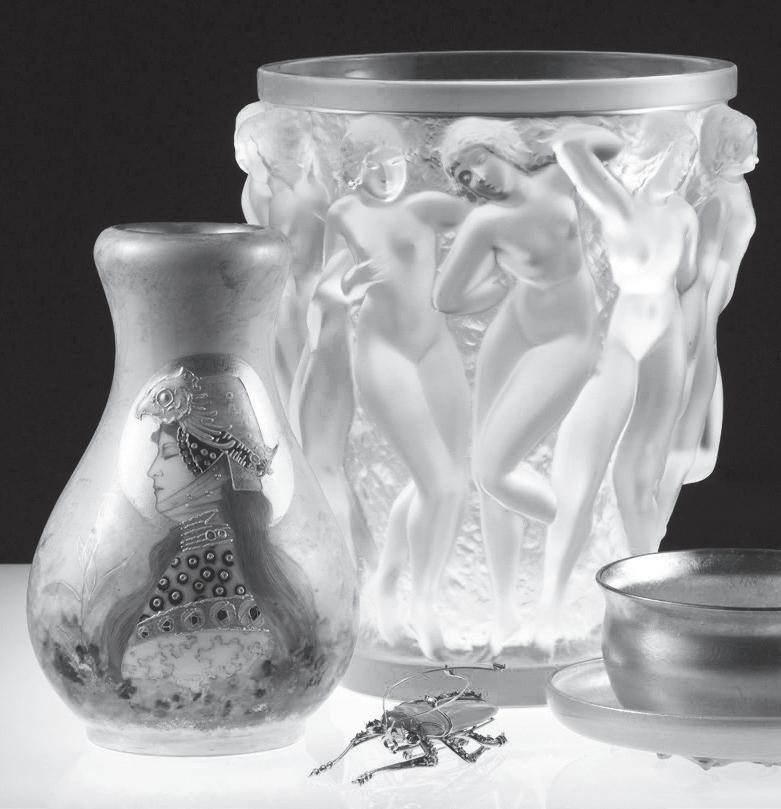


























It isn’t often that a congressional race becomes the center of national attention. But that was the case in the campaign between Tom Suozzi and Mazi Pilip to succeed the disgraced George Santos in the 3rd Congressional District.
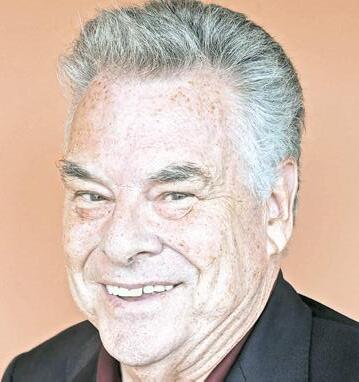 PETER KING
PETER KING
In less than 12 months in office, Santos became a joke — a very sick joke. After the House of Representatives voted to expel him in December, Gov. Kathy Hochul set a special election for Feb. 13. Under state election law, candidates in a special election are selected by party leaders. Not surprisingly, Democrats selected Tom Suozzi, a seasoned veteran of the political wars who had represented the district in Congress for three terms before giving up his seat to make an unsuccessful gubernatorial primary run against Hochul in 2022.
Nassau GOP Chairman Joe Cairo set up a selection committee (that I was part of) that interviewed 22 potential candidates, and overwhelmingly recommended Pilip. Not wanting to repeat the Santos calamity, Cairo had Pilip vetted by several firms, and she passed with
flying colors.
Ordinarily it would be a gamble for a relative newcomer who had served barely one term in the County Legislature to run against a veteran like Suozzi, but Pilip personified the American dream. She’d escaped from Ethiopia to Israel with her family when she was 12, and served in an elite parachute unit in the Israel Defense Forces. She was highly educated, married a Ukrainian cardiologist, moved to the United States and raised seven children in Great Neck. She was the first Republican ever re-elected in the 10th Legislative District.
Idefense at a time when Israel was at war with Hamas, Russia had invaded Ukraine and China was threatening Taiwan.
Though the Democrats had a significant registration edge over Republicans, 39 percent to 28 percent, President Biden’s popularity was at record lows, and Suozzi was on record saying he supported Biden “100 percent.”
heard there was real concern in the Suozzi camp right up to Election Day.
Pilip was the new running against the old. She was coming off a solid victory against the odds in a Democratic district, while Suozzi had lost badly to Hochul in the primary. Pilip was the legal immigrant who supported strong border security, challenging the candidate of the party that had allowed more than 8 million illegal migrants into the country, many of whom were overwhelming New York City and the parts of Queens that fall in the 3rd District. She was the candidate who was endorsed by the Border Patrol Agents’ union, while Suozzi had recently boasted of throwing Immigration and Customs Enforcement out of Nassau County when he was county executive. Pilip, a trained soldier, supported strong
Pilip campaigned tirelessly, and was making strong inroads. Suozzi countered by separating himself from prevailing Democratic positions on immigration, border security and support for police and didn’t seek Biden’s endorsement.
In the campaign’s closing days, every published poll had the race within the margin of error. A Republican poll had Pilip up by 5 points. Suozzi never got above 50 percent in any poll, a bad sign for a virtual incumbent. Democratic sources and some friendly reporters told me there was real concern in the Suozzi camp right up to Election Day. When the numbers were in, though, Suozzi won, 54 percent to 46 percent.
It’s still early, but my preliminary thoughts are that:
■ The snowstorm on Election Day hurt Republicans, but not enough to make
the difference.
■ Suozzi effectively managed to separate himself in the eyes of the voters from the sins of his party on immigration and support for the police.
■ Democratic congressional campaign committees provided extensive financial support to Suozzi early on.
■ Though Pilip actually garnered a higher percentage of votes against Suozzi than former President Donald Trump did against Biden in 2020, she couldn’t overcome the built-in Democratic registration edge.
■ Cairo and the Nassau Republican organization worked hard and effectively, but Pilip didn’t receive financial support from national Republicans comparable to what Suozzi received from Democrats.
■ Pilip was handicapped by having to campaign against the backdrop of the antics of congressional Republicans like Matt Gaetz and Marjorie Taylor Green, who come across as a gang that can’t shoot straight.
Suozzi won. No complaints. No excuses. But Pilip ran an excellent and courageous campaign, and has an excellent political future.
Peter King is a former congressman, and a former chair of the House Committee on Homeland Security. Comments? pking@ liherald.com.
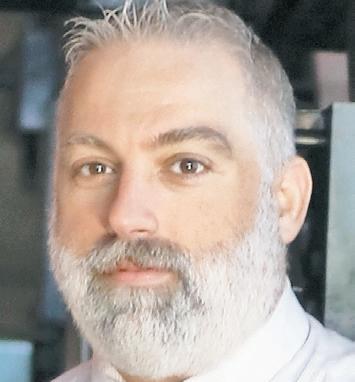 FMICHAEL HINMAN
FMICHAEL HINMAN
orget scary movies or the end of the world — what scares almost all of us the most, by far, is getting a voicemail from a family member, telling you to call back right away because “it’s important.” My 90-year-old father did that last week, a message I got on my phone as I was walking from what had been an enlightening and productive meeting with a school superintendent. The last several months had been filled with difficult calls like this. My mother’s cancer. My stepmother’s passing. Learning that a former colleague is gravely ill.
I couldn’t begin to imagine what this call might be about. Not wanting to stress as I dialed my dad’s number, I calmed myself by joking under my breath that my parents probably went
out and got married.
“Dad, it’s Mike. What’s wrong?”
“Nothing’s wrong. But I wanted to let you know your mother and I got married.”
This wasn’t my imagination. This was actually coming from the other end of the line.
“Wait, what? When?”
“What time is it now?”
My dad paused for a moment. “Oh, about an hour ago.”
each other, can anything really keep them apart?
That’s a mystery of love — one of many. And it was no coincidence, I’m sure, that all of this took place on the lead-up to Valentine’s Day.
Decades after calling it quits, my parents decided to remarry.
Since my stepmother died, my parents had reconnected. My dad moved from Florida back to where I grew up in Pennsylvania late last year to be closer to his grandchildren and great-grandchildren. And my mom happened to already be there, with room in her house for him to live.
Although they divorced in 1998, my parents remained friends. They didn’t have to co-parent or anything — all their kids were grown. But even in the worst of times, if two people truly love
Not much is known about Valentine, except that he lived and died during the third century, ministering to persecuted Christians in the Roman Empire — if you can believe what Wikipedia shares. But so much of Valentine’s story is obscured by legend, and it’s really not clear what led our culture to revere him.
More than 200 years after his death, Pope Gelasius I established a Feast of St. Valentine to take place on Feb. 14, to honor his martyrdom. Centuries later, Geoffrey Chaucer — the English poet who brought us “The Canterbury Tales” — wrote about Valentine in his poem “Parlement of Foules,” linking
him to romance and lovers for what is believed to be the first time.
Love happens to be the language many of us — if not all of us — relate to the most. The power of love can build new worlds or destroy them — and do just about everything in between.
The famed radio psychiatrist Dr. David Viscott once said, “To love and be loved is to feel the sun from both sides.” And 20th-century philosopher Rabindranath Tagore described love as “an endless mystery, for it has nothing else to explain it.”
My parents woke up one morning last week and decided between breakfast and buying some groceries that they would give marriage another go, decades after they called it quits.
Love is indeed an endless mystery. But as long as it continues to bring people together — like it did my mother and father once again — keeping it a mystery is worth the price.
Michael Hinman is executive editor of Herald Community Newspapers. Comments? mhinman@liherald.com.
Black History Month is a chance for us to celebrate the many contributions African-Americans have made to the country. They’ve done this despite discrimination and oppression — something even Long Island, in the past, was not immune to.
For example, when we think of slavery, we think of the Deep South before the Civil War. In fact, slavery existed in New York until 1827, and the state had more enslaved people than all the New England states combined, many of them on Long Island.
At the start of the American Revolution, there were roughly 10,000 enslaved Black Americans living on Long Island — nearly half of the state’s total enslaved population. While they were allowed more mobility and financial opportunities than their counterparts in the South, the claim that slavery wasn’t as bad in the North is largely inaccurate.
Throughout the 1700s, New York lawmakers created the Black Codes, which historian and author Richard Moss — in his book, “Slavery on Long Island” — claimed were “the harshest criminal laws and penalties enacted by northern colonists.” Punishments for striking a white person included two weeks’ imprisonment and corporal punish-
To the Editor:
ment.
Enslaved people were forbidden from gathering in groups of more than three, and prevented from owning property. Children born to enslaved mothers were automatically enslaved at birth. And testimony by enslaved people was inadmissible in court.
One common practice at the time on Long Island and New York was shipping unruly African-Americans to the Caribbean slave colonies. Conditions on islands such as Barbados and Jamaica were particularly brutal, with less than a third of slaves surviving on some plantations.
Even after slavery ended in New York, discrimination did not. In the 19th and 20th centuries, the number of AfricanAmericans in the Town of Oyster Bay dwindled from roughly 17 percent to less than a half-percent as racist real estate practices and federal policies prioritized homeownership for whites while driving Black Americans — and other minorities — from the area through a mix of intimidation, legislation, and rising property rates.
When Levittown — long touted as the model of the modern American suburb — was created in 1947, non-whites were expressly forbidden from owning any of the 17,400 new homes, with the deeds
Bruce Blakeman couldn’t care less about girls’ sports.
By signing an executive order to ban teams that allow transgender girls and women from playing in Nassau County athletic facilities last week, Blakeman continued to distract from his shirking of responsibilities as Nassau County Executive.
Since his marginal win over Laura Curran in 2021, after campaigning on the promise of $128 million in tax cuts, Blakeman has rejected every cut in annual budget proposals.
In 2022, amid the highest rates of new Covid-19 cases and hospitalizations in the county, he issued a series of orders against mask mandates in schools.
What has he been doing instead in his capacity as executive? Attacking the participation of the county’s small percentage of transgender girls and women in athletics, a right that is supported by experts in the field, including the National Women’s Law Center. Blakeman’s order does not mention transgender boys and men — instead he hides his under-researched and dangerous order behind a thin veil of Victorian-era patriarchal values and personal opinion.
“Part of good government is listening to your
themselves preventing ownership by “any person other than members of the Caucasian race,” according to a 2011 research paper by Baruch College Sociology professor Robert Courtney Smith.
Robert Moses, the urban planner and public official who is best known today for creating Jones Beach State Park and the state parkway system, designed Long Island parkways to make them impassable for buses, frequently the only mode of transportation for non-white and lowincome families. While some latter-day historians question the validity of this claim, Moses was also known to have fought against integrating public swimming pools in the 1920s.
African-Americans have continuously defied the odds and obstacles set against them — whether it be Jackie Robinson playing Major League Baseball, or mathematicians Creola Katherine Johnson, Dorothy Vaughan and Mary Jackson helping NASA put men on the moon. Recognizing those contributions — and learning from our mistakes of the past can open the door for even greater accomplishments in the future, as we look to remove more barriers.
The late Maya Angelou once said that “history, despite its wrenching pain, cannot be unlived. But if faced with courage, need not be lived again.”

constituents,” Blakeman said in a recent interview. Listen to this constituent, Bruce: Do your job, and leave trans kids alone.
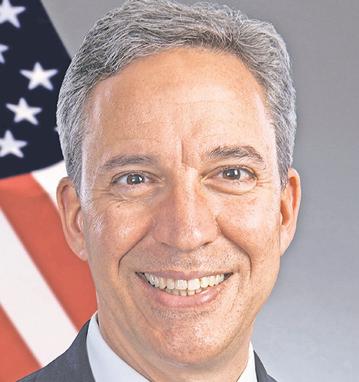 MJACK M. MARTINS
MJACK M. MARTINS
y wife and I know a successful young couple who live in a spacious Manhattan apartment. They have lots of dining and entertainment options, a doorman and great views of a park. Best of all, they roll out of bed, hop on a subway and they’re at the office in a matter of minutes. They’ve got it made, yet everyone’s debating how long it will be before they move to Long Island. You guessed it. This dynamic duo now has a newborn, and, as with many young families, conversations turn to where best to raise a family. Of course, they’re dutifully fighting it. Hoboken has a “hip little downtown.” Parts of Brooklyn have a “good vibe,” but ultimately, the conclusion is always the same: growing families need safe communities and good schools. Education has been part of this equation for as long as I can remember.
I’ve known people who paid top dollar for drafty old houses with bad plumbing on busy streets just to get into a particular school district. And background, faith or politics don’t matter; we are united in wanting what’s best for our children. Real estate agents say this is key to Long Island’s robust real estate market. We’re a stone’s throw from Manhattan, and boast some of the best schools in the country. That’s an enviable distinction, but one that could now be in jeopardy.
than $167 million in cuts to 337 districts — more than half of the districts in the state, many of them on Long Island.
Nassau and Suffolk County districts are facing a combined loss of $75 million.
Gov. Kathy Hochul’s recently proposed budget contains some controversial changes to state aid formulas that would hurt Long Island schools. For starters, the governor would eliminating 1976’s “hold harmless” provision, which gave schools planning stability by guaranteeing at least the same level of funding year to year. That’s because schools couldn’t fairly be expected to put programs in place one year and then pull the rug out from under children and parents the next. Unfortunately, Hochul’s effort would result in more
a book.” Libraries are the greatest thing. They open the world to anyone willing to look. Not everyone bothers to look, but those who want to have the opportunity. We need to keep that going, and not be controlled by closed-minded people.
You may not know that about onethird of Nassau County libraries allow adult patrons to borrow a telescope just like a book. I have been promoting the Library Telescope Program for almost eight years now, and I work with 17 Nassau County libraries so far.
Everything I do is free to the library. It just needs to buy the telescope and various accessories directly from vendors, totaling about $450. I help by modifying the telescope to make it easy to use and transport, and provide maintenance as needed. I also provide staff and patron training on how to handle and use the telescope, as well as periodic astronomy-related presentations. In March I will be doing eclipse presentations at eight libraries, and occasionally I do Moon Parties as well. All at no cost.
There are now over 1,000 libraries running the Library Telescope Program, mostly in the U.S. and Canada, but also in other countries.
TOM LYNCH LynbrookTo the Editor:
Looking out my bedroom window, noticing the snowfall had just about stopped, I decided to gear up and start the removal process. As I was clearing off the car, readying to start the shoveling, I noticed that part of my front walk has been cleared. Looking even closer, I saw a body working on the front entranceway. My neighbor has often started snow removal for me as I have done for him, so I thought for sure it was either him or one of his sons helping out.
As I got closer to the sidewalk, I realized for sure that this helper, a young man, was unknown to me. I asked why he was helping, and he said, “I got up early, noticed the snowfall and decided to do some shoveling.” He was finishing up the last section of sidewalk, so I went inside to grab some cash to give him, but when I came back outside, he was gone. Off to job No. 2, I suppose.
Whoever you are, thank you!
PHIL GRELLA Rockville CentreShe would also change “school aid runs.” So instead of computing for current inflation, Hochul would use an eight-year average, which would reduce school aid by another $245 million. Frankly, I can’t think of a greater accounting end run. Do our school superintendents get to tell labor, vendors or their insurance companies that they won’t pay increased fees, and prefer to pay an “eightyear average”? This is no time for make-believe. If it wouldn’t work in our personal budgets, it won’t work in theirs, either.
Suffice to say, Nassau and Suffolk counties are faced with a combined loss of $75 million. The governor would have you believe that we can just change brands of soap and make those savings, but they’re not cutting fat in Albany, they’re cutting to the bone. These funds pay for things like special education, development programs, music and art — things that make our
schools special.
And unlike other parts of the state, where schools get as much as 90 percent of their funding in the form of state aid, some of ours receive as little as 5 percent. That means local taxpayers shoulder as much as 95 percent of the cost. To ask them to pay more is nothing short of government malpractice. And in a $233 billion budget that’s growing by $5.9 billion in state operating funds, savings can certainly be found elsewhere. Hochul plans to spend $2.4 billion on illegal migrants, $275 million on artificial intelligence and even $150 million on swimming pools. Are Long Island students less important?
We are America’s first suburb, with communities that place a high value on family life and safety. We are neighbors who send $15 billion more in taxes to Albany than we get back, and schools are the backbone of our communities. This isn’t Democrat versus Republican, because districts everywhere are getting cut. This is Long Island versus Albany. It’s time to lock arms and voice our opposition.
Jack M. Martins represents the 7th Senate District.
Baker









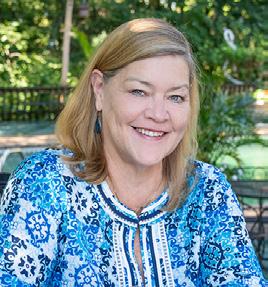


Linda



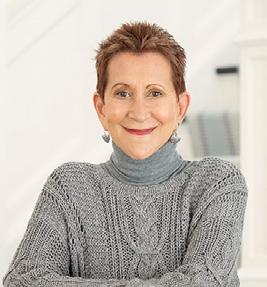





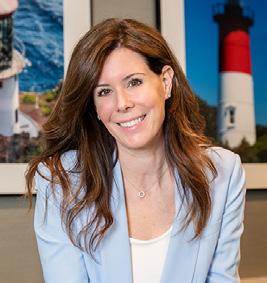

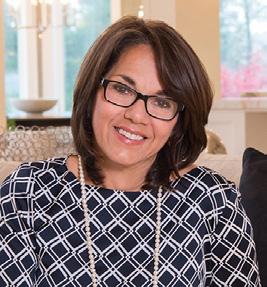



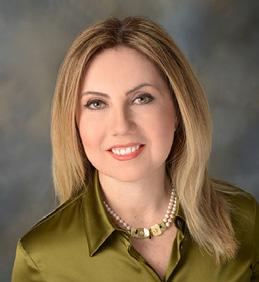







For Sale
Glen Cove, NY
16 Whitney Cir. $2,998,000.
Debra Quinn Petkanas c.516.359.3204


For Sale
Greenport, NY
880 Kerwin Blvd. $1,450,000.
Linda Faraldo
266


For Sale
Glen Cove, NY
15 Hitching Post Ln. $799,000.
Emily Quinn Edelman c.516.761.9417


For Sale Greenport, NY
620 Kerwin Blvd. $649,000.
Linda Faraldo


For Sale
East Hills, NY
20 Canterbury Ln. $1,799,000.
Linda Faraldo
c.516.984.9049


For Rent Roslyn, NY
1667A Northern Blvd. $3,800/mo.
Pinar Ogeturk
